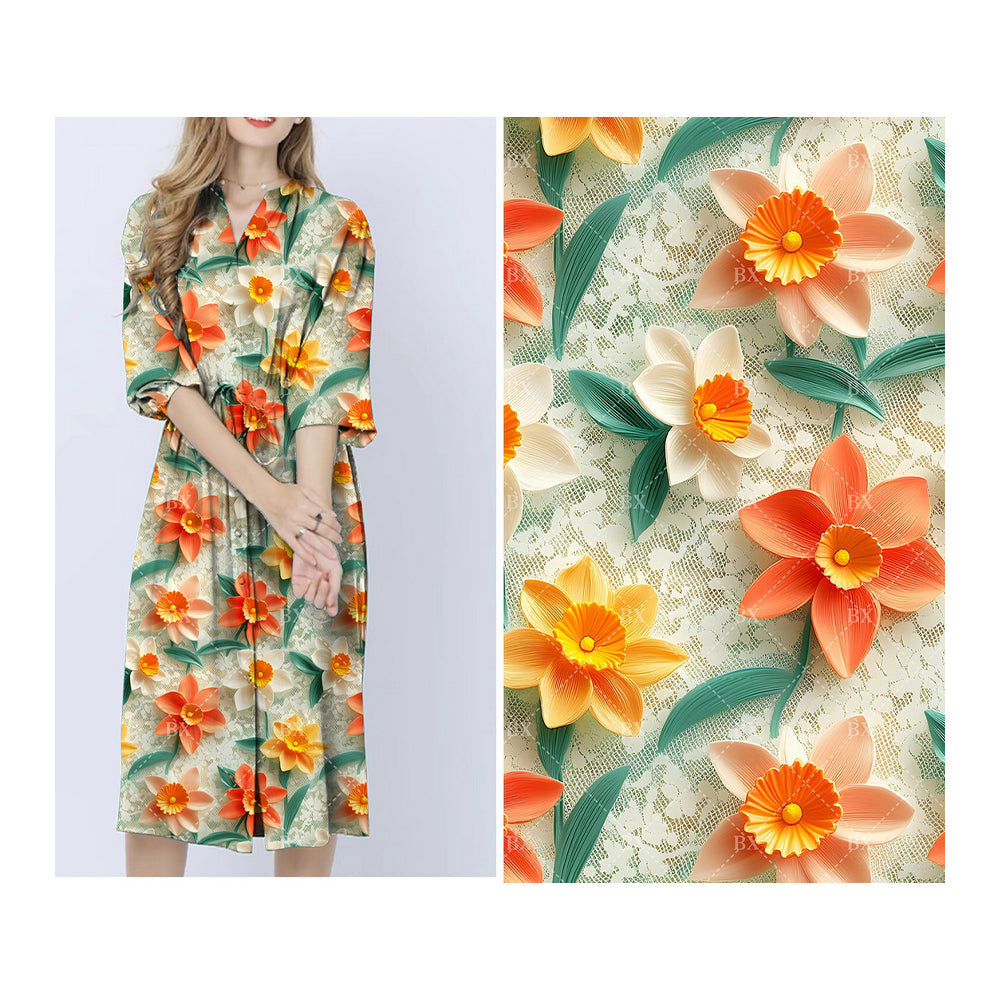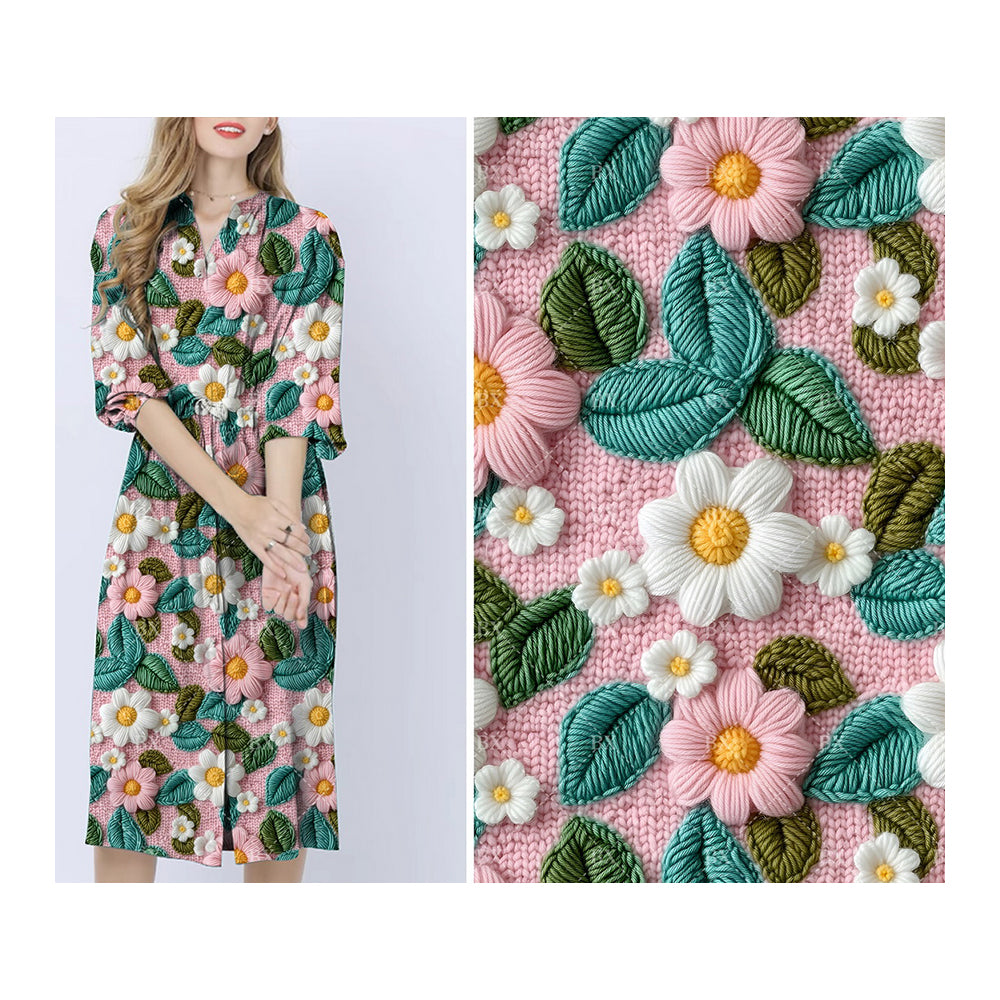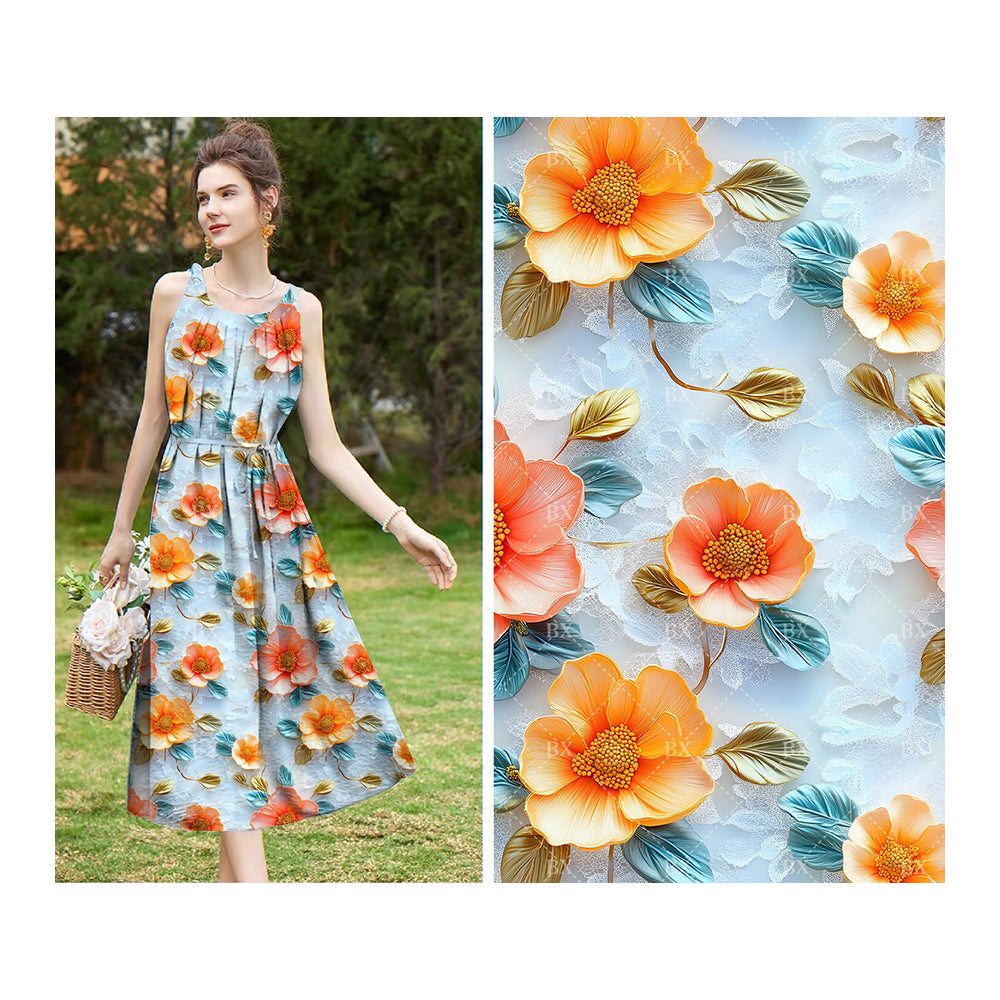Digital Print Fabric
- Process: Designs are created digitally on a computer and then printed directly onto the fabric using specialized inkjet or laser printers. Think of it like your home printer, but on a much larger scale and with specialized inks for fabric.
-
Pros:
- Highly detailed: Excellent for intricate designs, photographs, and designs with many colors.
- No minimums: Cost-effective for small orders or even single items.
- Quick turnaround: Faster production times, especially for smaller orders.
- Environmentally friendly: Uses less ink and water compared to screen printing.
-
Cons:
- Cost: Can be more expensive for large orders.
- Durability: May not be as durable as screen prints, especially on dark fabrics or after many washes.
- Color matching: Matching exact Pantone colors can be challenging.
- Fabric limitations: Works best on certain fabrics, often 100% cotton or cotton blends.
Screen Print Fabric
- Process: A design is created on a mesh screen, and ink is pushed through the screen onto the fabric. Each color in the design requires a separate screen.
-
Pros:
- Durability: Produces long-lasting prints that withstand many washes.
- Vibrant colors: Creates bright, bold colors, especially on dark fabrics.
- Cost-effective: More economical for large orders.
- Versatility: Can be used on a wide range of fabrics and materials.
- Special effects: Allows for unique textures and tactile effects (e.g., glitter, raised prints).
-
Cons:
- Setup: Requires more setup time and labor, making it less cost-effective for small orders.
- Limited colors: Complex designs with many colors can be expensive and time-consuming.
- Not ideal for photos: Not the best choice for highly detailed or photographic images.
- Environmental concerns: Uses more ink and water than digital printing.
Which method is right for you?
The best method depends on your specific needs and priorities. Consider the following factors:
- Design complexity: If your design is intricate or has many colors, digital printing is likely the better choice.
- Order size: For small orders, digital printing is more cost-effective. For large orders, screen printing is usually cheaper.
- Fabric type: Digital printing works best on certain fabrics, while screen printing is more versatile.
- Durability: Screen prints are generally more durable than digital prints.
- Budget: Digital printing can be more expensive for large orders, while screen printing has higher setup costs.
Ultimately, the decision of whether to use digital print or screen print fabric depends on your individual project requirements.






Leave a comment
This site is protected by hCaptcha and the hCaptcha Privacy Policy and Terms of Service apply.